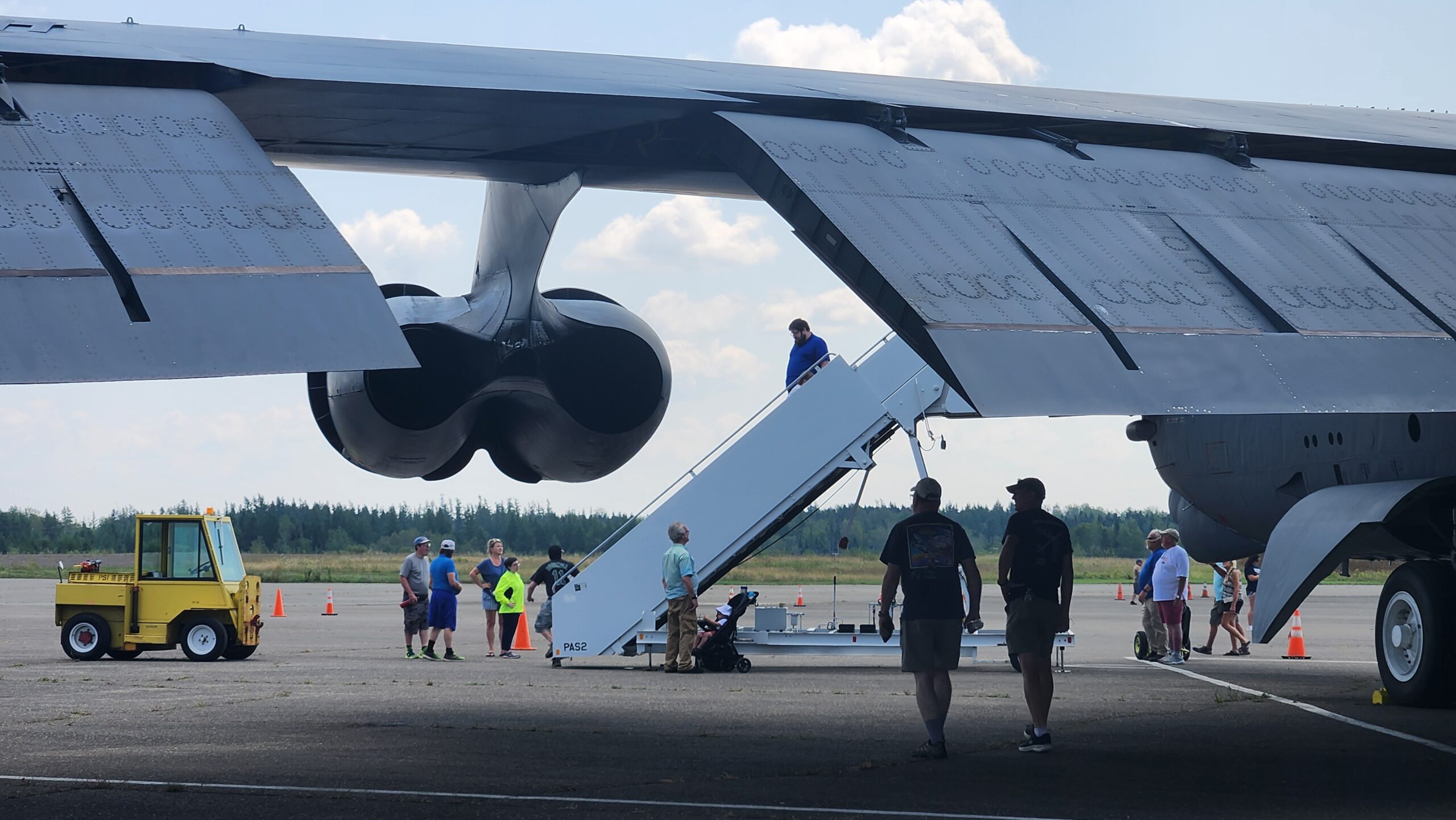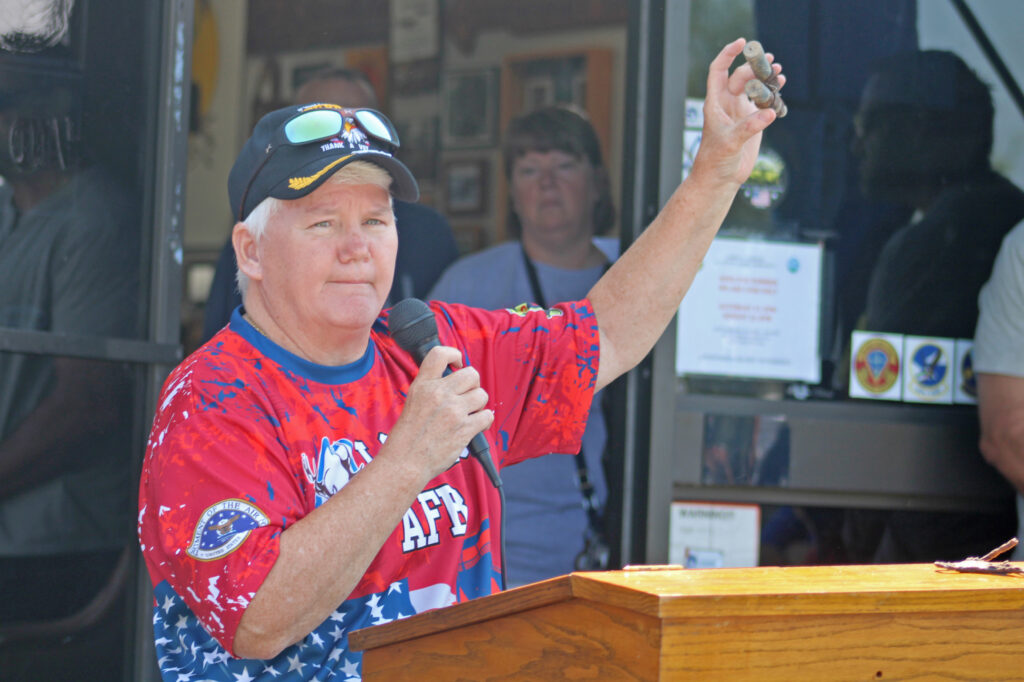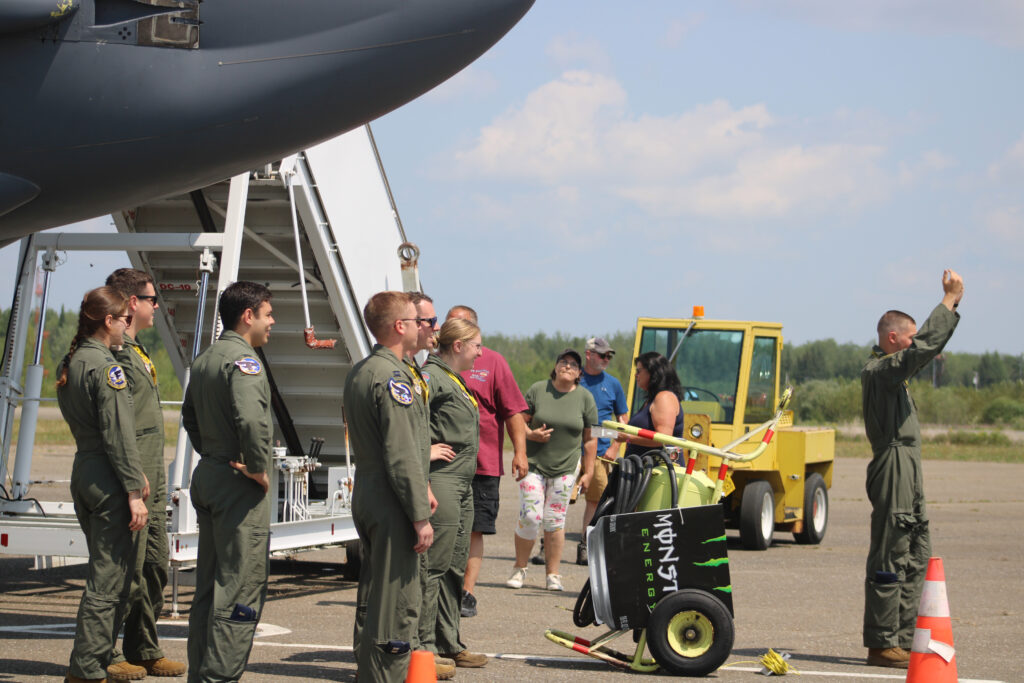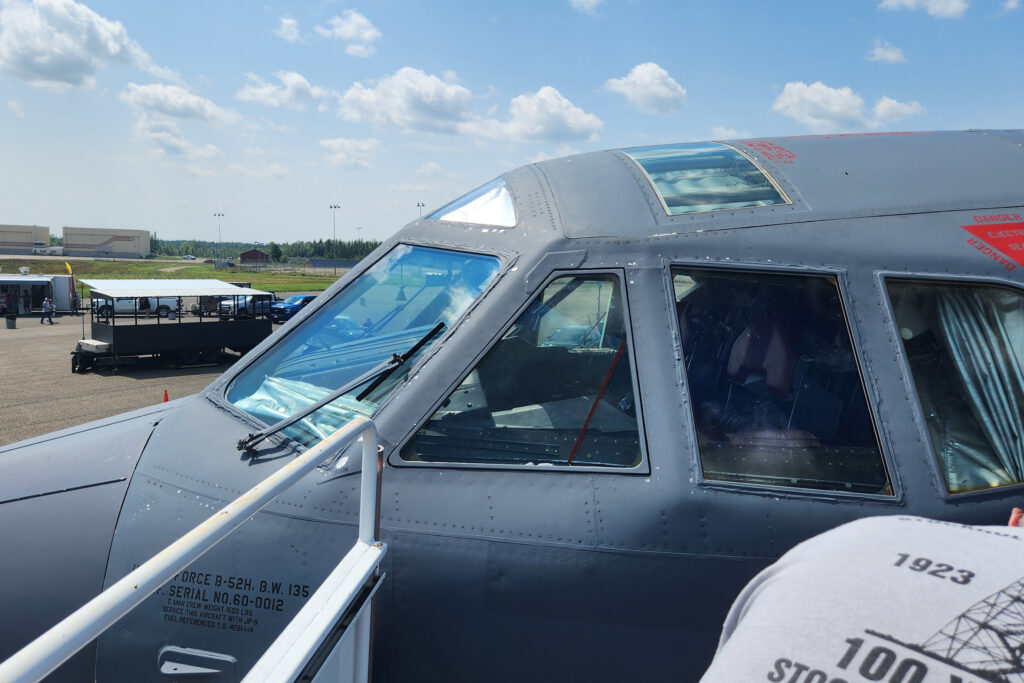
LIMESTONE, Maine — Thirty years after Loring Air Force Base closed, its importance to northern Maine and all who served there was on full display Friday, the first day of an open house to mark the base’s contributions to military history.
As part of the event, the Loring Air Museum marked a homecoming: pieces of the plane in which the base’s namesake crashed during World War II have arrived in Limestone to become part of the museum’s collection.
Loring was the Strategic Air Command’s closest base to Europe during its Cold War heyday, and famously housed nuclear weapons and their components. With a B-52 on the ground, museum presentations and tours, former service members and visitors had a chance to remember what Loring used to be.
Friday kicked off with a poignant tribute to Maj. Charles J. Loring Jr., a U.S. and South Korean Medal of Honor recipient.
Cuppy Johndro, museum secretary, recounted learning in 2022 that Loring’s wreckage had been found in Belgium, where he was shot down during World War II. He was taken prisoner, and died in combat during the Korean War. Pieces of his plane were recovered and have been shared with his family as well as the Limestone museum.

“We will be placing the last two pieces in the showcase after this ceremony and invite you to view them and remember the sacrifice of this very brave man,” Johndro said. “We invite you to touch history. We are grateful, Major Loring, and we will never forget you.”
The museum worked with Loring’s family and the researchers who found the wreckage, and sent $350 to get the various bits of metal to Limestone. The first time around, customs seized the box, but after being convinced it was a worthless old American plane, they released the box, she said.
Johndro and Loring’s brother, Paul, decided to open the box in Portland, where Charles Loring was born. It happened on Paul’s 92nd birthday, she said. The family retained some of the pieces and others are in a display case at the Limestone museum.
Turnout has been overwhelming, Johndro said after the ceremony. The venue was crowded on Thursday before the open house even started, and Friday morning started with a bigger surge of people.
One emotional reunion unfortunately didn’t happen quite as planned, she said. Crewmember Ron Craft, who was on the last mission out of Loring on a KC-135 tanker, was supposed to attend the open house and be surprised to see his own plane on the tarmac. The tanker experienced mechanical issues and had to land in Bangor, Johndro said.
The air museum arranged for Craft and his wife to head to Bangor, and personnel let him board the plane early Friday morning, she said.
However, a B-52 bomber did make it to Loring with its crew out of Minot, North Dakota. Carts ferried people from the flightline out to the plane, where they could marvel at the steel behemoth, climb up to peer in the cockpit and chat with crew members.

When Loring closed, its 69th Bomb Squadron was decommissioned. But in 2009, the group was reactivated in Minot, said crew chief, SSgt. Kaylie LePage, who grew up in Winterport.
The plane and crew provide global deterrents for the U.S. and allies and also fly training missions, she said. She had already talked to a number of former Loring personnel.
“I’ve met quite a few people who used to maintain it or used to fly it,” she said. “It’s really a big deal for a lot of them.”
Capt. Jacob Carlson met a former radar navigator on Friday and brought him to the cockpit, where he marveled at the technology.
“He said they used to fly at 100 feet above the ground back in the day,” Carlson said. “Thinking of that is just scary.”
Pilots can’t go lower than 1,000 feet now, he said.

Peering into the cockpit, a couple of former Loring servicemen reminisced. Sgt. Tim Radcliff served as security police from 1976 to 1980, and was in Limestone for his fourth open house, he said.
SSgt. E5 Darrell Tapley of Manchester, originally from Houlton, was stationed at Loring from July 1978 to November 1979. He hadn’t been to an open house before and found it both exciting and a bit sad.
“This is my first time. It’s kind of neat to be on the base and see it,” he said. “I used to live on the base here, but the houses have been torn down. So much has been destroyed here.”
Early Friday afternoon at the museum, Peter Noddin, aviation archeologist with the Maine Aviation Historical Society, talked about the deadliest year on Loring: 1958, which saw 7 plane crashes and 25 fatalities, due mostly to mechanical or electrical malfunctions.
Likely the most widely known disaster occurred on July 29, 1958, when a B-52 crashed on the Moir farm in Limestone. The plane dove sharply, landing nose-down and exploding into a huge fireball, Noddin said. One crewmember survived; eight died.
“One way or another, disasters shape history,” Noddin said.

Activities at the base will continue through the weekend, including a Friday night concert, posting of the colors on Saturday by the Loring Job Corps Color Guard, the reveal of a commemorative U.S. postage stamp, the mobile World War II Museum, a weekend-long scavenger hunt and more tours.
For details, visit the open house Facebook page or the Loring Air Museum website.
Correction: The story has been amended to clarify when Maj. Charles Loring’s plane crashed and when he died in combat.







